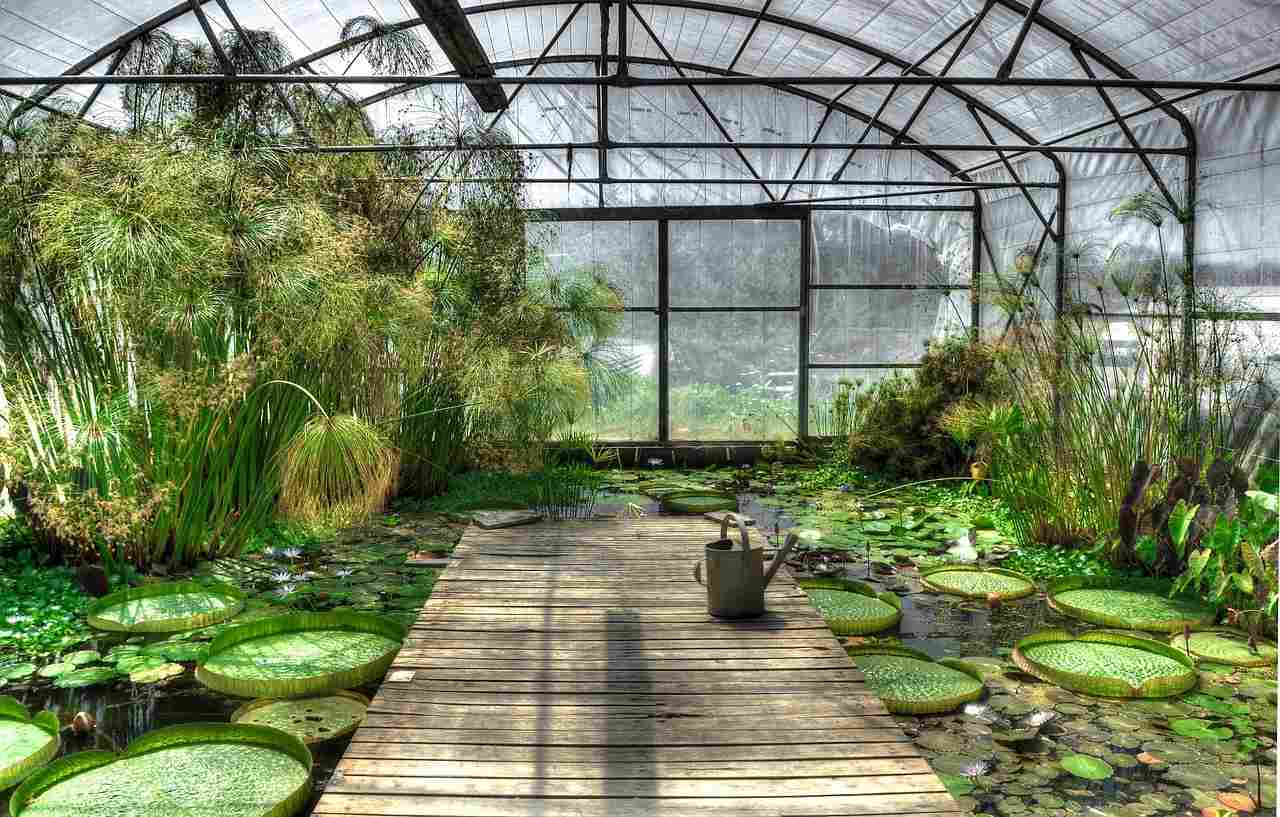
When realizing your dream of owning a greenhouse, one crucial decision stands in your way: to choose from glass or polycarbonate. The choice you make will shape the environment where your plants will grow. For gardening enthusiasts, the charm of a greenhouse lies in its ability to provide a nurturing space for plants regardless of the season. As the demand for greenhouses rises, so does the debate between traditional glass and the increasingly popular polycarbonate.
We have compiled a comprehensive list of benefits so you can make an informed decision on greenhouse materials, uncovering the unique advantages that polycarbonate offers over glass. Whether you are an expert gardener or just starting out, having an understanding of polycarbonate and its benefits for your greenhouse might be the key to cultivating your slice of botanical paradise.
Advantages of a Polycarbonate Greenhouse
Exceptional Durability
Greenhouses made from polycarbonate are 200 times more durable as compared to glass. This is one of the most considerable aspects, as greenhouses have to face harsh weather conditions and elements of the atmosphere. One more aspect is even when we talk about repairing, unlike glass, repairing polycarbonate panels is easy and smooth, allowing for effortless individual replacements that keep your greenhouse intact.
Note: Care is still needed. Like any cherished possession, polycarbonate requires a touch of care; treating it with UV protectants shields against yellowing or degradation. With a little human attention, these structures can survive for roughly a decade, proving their lasting value over glass.
Optimal Light Distribution
Greenhouses are meant for optimal temperature and lighting, and polycarbonate tops the list for providing this benefit because it can diffuse light perfectly. This gentle illumination not only fosters plant health but also promotes accelerated growth. Moreover, polycarbonate is a natural shield against harsh sunlight and radiation, courtesy of its inherent UV protection. While double- and triple-paned glass can mimic similar insulating properties, even light diffusion sets polycarbonate apart, ensuring an environment conducive to thriving plant life.
Cost-effective
We all want to be budget savvy, and what if we give you budget-friendly options to build a greenhouse that is cost-effective? Building a greenhouse is an investment; polycarbonate emerges as the pragmatic choice, offering cost-effective advantages over glass. While the initial investment may lean in favor of polycarbonate due to its lower cost, it’s essential to consider the long-term implications. With a lifespan of approximately ten years, polycarbonate proves to be a wise investment when viewed through the lens of sustainability. On the other hand, opting for cheaper alternatives may lead to increased repair expenses over time, ultimately outweighing any initial cost savings. By prioritizing durability and longevity, polycarbonate presents itself as a financially sound choice for greenhouse enthusiasts.
Highly shatter resistant
One of the distinctive features that sets polycarbonate apart is its shatter-resistant quality. While glass greenhouses show strength, they falter due to impacts from hail, rocks, or other potential hazards. When we compare it with glass, the risk of cracks or breakage remains even with the added fortification of tempered glass. If you are looking for an enduring and robust greenhouse, the shatter-resistant nature of polycarbonate stands as a crucial advantage. As you navigate the choice between glass and polycarbonate, consider the intrinsic value of safety, making well-informed decisions that align with the costs, durability, and practicality you seek. While glass greenhouses may charm hobby gardeners, the pragmatic choice for commercial growers often leans toward the robust reliability of polycarbonate.
Minimal maintenance
Maintaining polycarbonate sheets is a breeze as they require minimal care while maintaining glass is tough. It demands a lot more care. When you opt for polycarbonate greenhouse cleanings, they become irregular occurrences rather than routine tasks, allowing you to maintain that enduring greenhouse aesthetic easily.
On the other hand, glass structures necessitate additional measures to shield plants from intense UV rays, often requiring the implementation of shading systems. Furthermore, meticulous attention to ventilation and airflow becomes paramount to prevent overheating—an aspect that polycarbonate gracefully mitigates. With polycarbonate, you can cultivate your greenhouse oasis with less hassle, leaving you more time to enjoy the beauty of your thriving plants.
Ready to Upgrade to Polycarbonate?
After exploring the differences between glass and polycarbonate greenhouse glazing, it’s clear that polycarbonate is an excellent choice for enhancing durability, insulation, plant protection, and longevity. Investing in polycarbonate panels promises long-term benefits for your greenhouse.
If you are eager to elevate your greenhouse with the superior qualities of polycarbonate, we are a wholesale supplier; we offer competitive pricing on high-quality polycarbonate greenhouse panels. Our team is experienced and ready to assist you in selecting the perfect thickness, size, and accessories to either construct a new greenhouse or upgrade your existing one.
FAQs
Which is clearer, glass or polycarbonate glazing?
Traditionally, greenhouses have been constructed using clear glass, offering an unobstructed view inside and contributing to the timeless allure of these structures. The clarity of the glass enhances the aesthetic appeal, lending it that classic greenhouse charm. However, it’s worth noting that polycarbonate panels, while not as transparent as glass, still allow ample light to filter through. Although they may not provide the same traditional greenhouse aesthetic, they offer practical benefits.
Is polycarbonate stronger than glass?
Polycarbonate panels have impressive strength and can withstand considerable force without shattering. At the same time, standard greenhouse glass may be slightly more vulnerable to breakage. Both glass and polycarbonate panels are engineered to endure harsh weather conditions and prolonged use, ensuring longevity and resilience. But when we think broadly and consider other factors like price, maintenance, etc. Polycarbonate wins the race.
Which is easier to clean, polycarbonate panels or glass?
Maintaining your greenhouse’s clarity is essential for aesthetics and plant health. While glass greenhouses require occasional cleaning to uphold their pristine appearance, polycarbonate panels offer the advantage of needing less frequent maintenance, typically only once or twice a year. However, it’s crucial to ensure proper installation of polycarbonate panels to prevent dust accumulation, which can impede light transmission and complicate cleaning efforts. Whether you opt for the occasional upkeep of glass or the less frequent cleaning regimen of polycarbonate, both materials contribute to a vibrant and thriving greenhouse environment.
